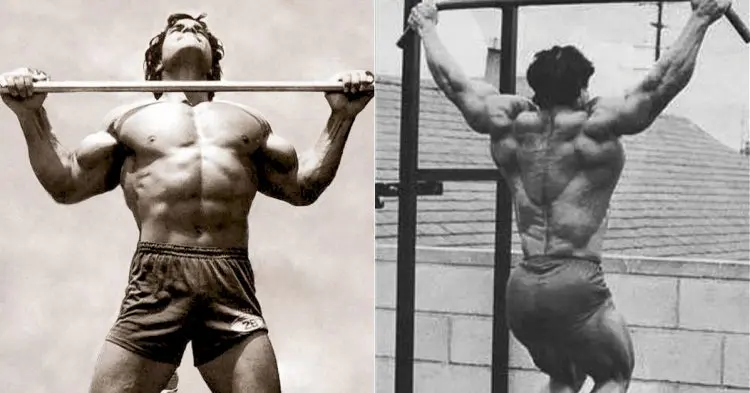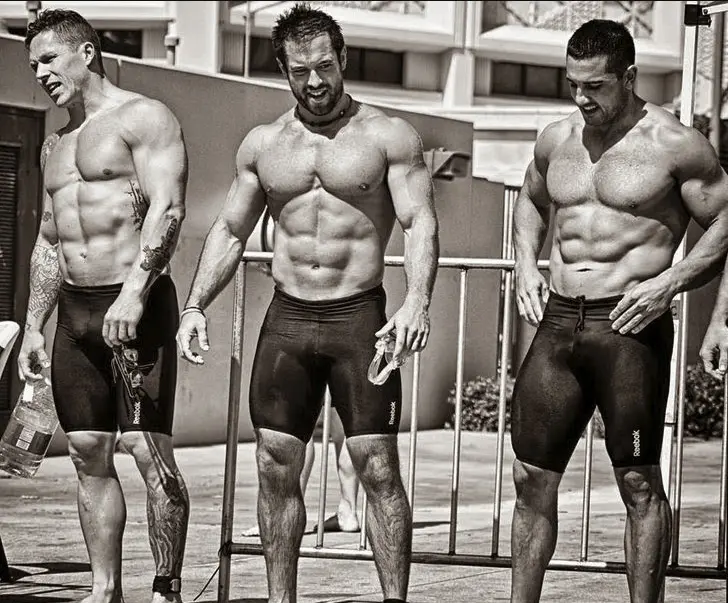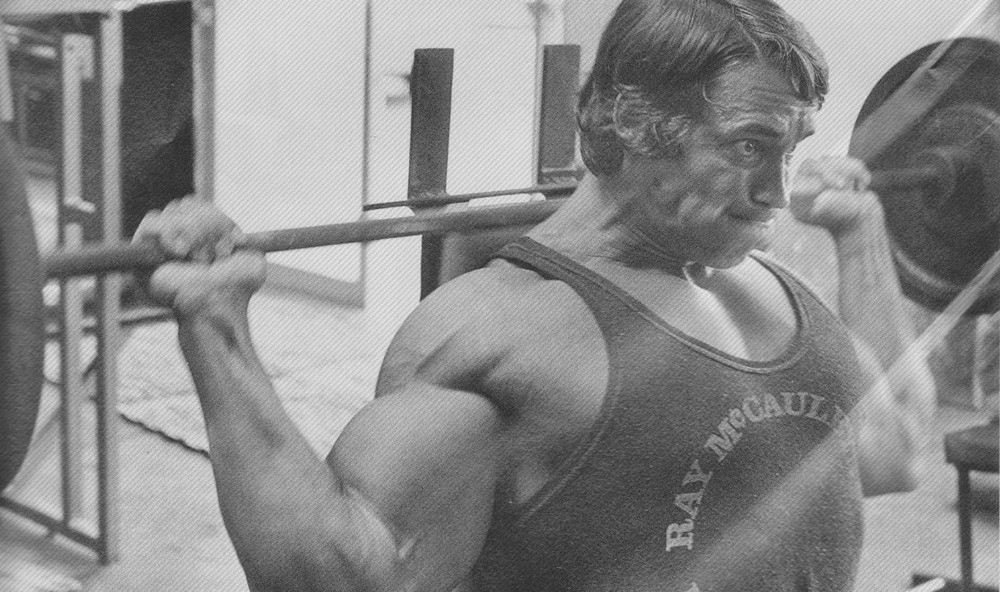Unable to get to the gym? No problem; home-based bodyweight workouts are a great way to maintain your fitness and strength, and even build muscle (1). But, if you are new to this kind of training, you may be wondering how to organize your workouts for the best results.
In this article, we’re going to explore the options available for bodyweight training so you can create your ideal workout schedule.
Bodyweight basics
Typically, bodyweight training involves doing exercises that use your own body for resistance. Also known as calisthenics, there are no barbells, benches, machines, or bands involved in bodyweight training – it’s just you against gravity. In many ways, this is the purest form of exercise and one that has been practiced for hundreds, if not thousands of years.

Usually bodyweight training is performed all around the world and is especially popular with gymnasts, fighters, and in the military. It has a lot of benefits and advantages which we’ve listed below…
- You can work out anywhere, and any time
- Bodyweight exercises require very little space
- No equipment required
- You can use bodyweight exercises to develop all components of fitness
- Most exercises can be adapted for beginners, intermediates, and advanced exercisers
- Bodyweight exercises are often easier on your joints than many free weight and machine exercises
- Bodyweight exercises are very natural and often replicate everyday movements
- Most bodyweight exercises are compound in nature and work multiple muscle groups at the same time
- With no weights to drop, bodyweight exercises are safe to perform alone
- You can combine many bodyweight exercises with additional items of equipment, including medicine balls, resistance bands, benches, steps, and boxes, although equipment-free bodyweight exercises are also very effective
While bodyweight training has some obvious advantages, it does have a few drawbacks too. Those include:
- You can’t adjust the load as easily as you can with free weight or machine exercises
- In some cases, the only way to make your workout harder is to do more reps
- Some exercises may be too easy for advanced exercisers
- The heavier you are, the harder the exercises will be, and some exercises may be too demanding
- Some muscle groups are easier to train than others with bodyweight exercises
So, while there are a few disadvantages to bodyweight training, there are probably more advantages than drawbacks. That’s why bodyweight training has been popular for so long and will remain so for the foreseeable future; it really works!
Level Up Your Fitness: Join our 💪 strong community in Fitness Volt Newsletter. Get daily inspiration, expert-backed workouts, nutrition tips, the latest in strength sports, and the support you need to reach your goals. Subscribe for free!
How to make bodyweight exercises more demanding
The biggest drawback of bodyweight training is that you only have your bodyweight to use for resistance. That means you may have to do very high reps to fatigue your muscles. If you have to do 100 reps of squats to tire out your legs, you are in for a very long (and boring!) workout.
The good news is there are several ways you can modify almost any bodyweight exercise to make it more demanding. Here are a few effective methods you can use…
Take shorter rests between sets – most people rest 60-90 seconds between sets of standard bodybuilding exercises. This allows for almost complete recovery. Taking shorter rests will make your subsequent sets feel much harder so you won’t be able to do as many reps. Make your bodyweight workouts more demanding by resting just 20-30 seconds between sets.
Use a slower tempo – tempo is the speed at which you perform your exercises. For example, if, during push-ups, you lower your body to the floor in one second and then push yourself back up in one second, you are using a 1:1 tempo. Using a slower tempo will make any bodyweight exercise harder. Try a 3:3, 4:4, or even 6:6 tempo to increase the intensity of your workout.
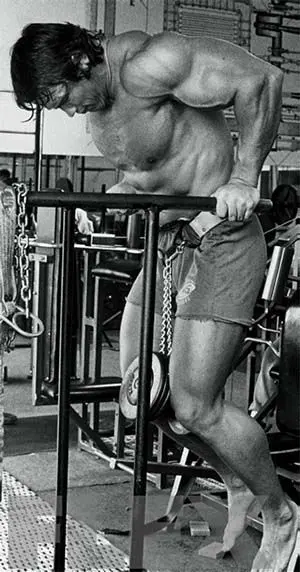
Increase your bodyweight – no, we don’t mean you should eat a load of junk food and get fat! Instead, put on a weighted vest or backpack to make yourself heavier. Start off with about 10% of your body weight and increase gradually from there.
Use one limb instead of two – some bodyweight exercises can be done with just one arm or leg. Needless to say, this makes them much more demanding. Be warned, single-limbed exercises are usually much more than twice as hard as their two-limbed versions. Just because you can do 30 regular push-ups does not mean you’ll be able to do 15 single-arm push-ups. You might not be able to do any!
Combine bodyweight exercises with resistance bands – while this could be construed as cheating, you can use resistance bands to make some bodyweight exercises harder. For example, loop a band over your upper back, hold the ends in your hands, and do push-ups. You’ll have to overcome the resistance offered by the band as well as your bodyweight.
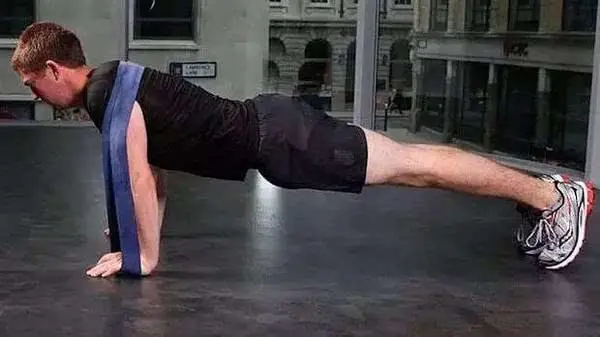
Use these methods to gradually increase the difficulty of your bodyweight exercises, making your workouts progressive, just as they would be if you trained with weights in a gym.
How to organize your bodyweight workouts
When it comes to bodyweight training, you can organize your workouts in several different ways. All of these methods work and offer advantages and disadvantages. Which one is right for you? That’s not an easy question to answer because your personal circumstances, current level of fitness, training goals, and the amount of time you have available will all determine which approach is best for you.
To help you decide, here are three tried-and-tested bodyweight training methods, complete with sample workouts.
Full-body workouts
With full-body workouts, you train all of your major muscles in the same session and exercise two or three times a week, such as Monday, Wednesday, and Friday. Full-body workouts are suitable for people who don’t have the time to train more than 2-3 times per week, or who want to improve fitness or burn calories more than they want to build muscle.
Sample workout:
Do 2-4 sets of 12-20 reps of each of the following exercises. You can also do this workout as a circuit by doing one set of each exercise in order and then do 2-4 laps.
| No. | Exercise | Sets | Reps |
| 1 | Squats | 2-4 sets | 12-20 reps |
| 2 | Push-ups | 2-4 sets | 12-20 reps |
| 3 | Pull-ups | 2-4 sets | 12-20 reps |
| 4 | Lunges | 2-4 sets | 12-20 reps |
| 5 | Pike push-ups | 2-4 sets | 12-20 reps |
| 6 | Body rows | 2-4 sets | 12-20 reps |
| 7 | Side planks | 2-4 sets | 12-20 reps |
| 8 | V-sits | 2-4 sets | 12-20 reps |
Upper body/lower body split
If you want to build muscle or strength, an upper body/lower body split is effective for helping you to achieve this. With this workout system, you train four times per week, working your upper body twice and your lower body twice. By working half of your body at a time, you can do more exercises per muscle group than you can with full-body workouts, and that’s useful for muscle building.
On the downside, you will need to commit to training four times per week, and missing just one workout will unbalance your training week. Advanced exercisers can also upgrade this method and train six times per week, hitting each muscle group three times.
Level Up Your Fitness: Join our 💪 strong community in Fitness Volt Newsletter. Get daily inspiration, expert-backed workouts, nutrition tips, the latest in strength sports, and the support you need to reach your goals. Subscribe for free!
Sample workout:
Do 2-4 sets of 12-20 reps of each exercise. Repeat each workout twice per week. For example, work your upper body on Monday and Thursday, and your lower body on Tuesday and Saturday.
Upper body:
| No. | Exercise | Sets | Reps |
| 1 | Decline push-ups | 2-4 sets | 12-20 reps |
| 2 | Pull-ups | 2-4 sets | 12-20 reps |
| 3 | Wide-arm push-ups | 2-4 sets | 12-20 reps |
| 4 | Chin-ups | 2-4 sets | 12-20 reps |
| 5 | Pike push-ups | 2-4 sets | 12-20 reps |
| 6 | Body rows | 2-4 sets | 12-20 reps |
| 7 | Wall side raises | 2-4 sets | 12-20 reps |
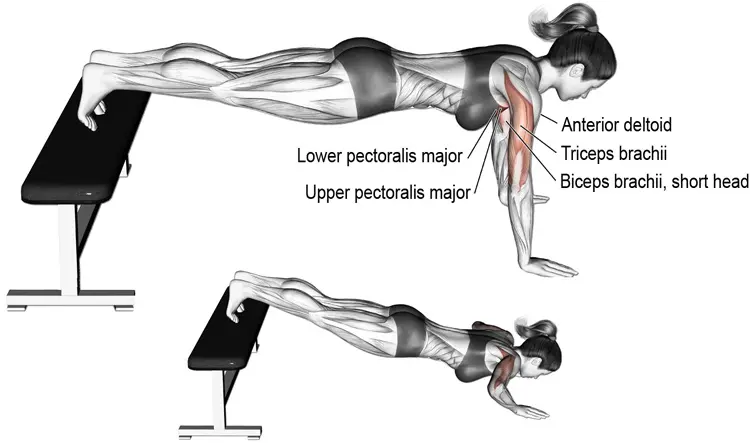
Lower body:
| No. | Exercise | Sets | Reps |
| 1 | Squat jumps | 2-4 sets | 12-20 reps |
| 2 | Heel slide leg curls | 2-4 sets | 12-20 reps |
| 3 | Reverse lunges | 2-4 sets | 12-20 reps |
| 4 | Single-leg Romanian deadlifts | 2-4 sets | 12-20 reps |
| 5 | High step-ups | 2-4 sets | 12-20 reps |
| 6 | Single-leg calf raises | 2-4 sets | 12-20 reps |
Body part split
With this workout method, you train a couple of muscle groups per training session and work each one once or twice per week.
There are lots of different ways to interpret this type of workout, and examples include:
- Chest and back
- Shoulders and arms
- Legs and abs
(sequence could then be repeated to hit each muscle group twice per week)
Or:
- Legs
- Chest and triceps
- Back and biceps
- Shoulders
Or:
- Chest
- Back
- Shoulders
- Legs
- Arms and abs
Body part splits are ideal for hypertrophy or bodybuilding training because you’ll have all the time you need to work your muscles with lots of different exercises. However, some exercisers may find that training each muscle group only once per week is not as useful for growth as other, higher-frequency training plans.
So, how often should I work out?
While all of the approaches outlined above can work, the right one for you depends on several factors. Those factors are:
How hard do you want to train?
If you want to train hard, pushing your muscles to the limit each time you work out, you can’t expect to train those same muscles three or more times per week. The harder you train, the more rest you’ll need between similar workouts. Training the same muscle groups too often could cause injuries and will definitely affect your progress.
What is your current training status?
Are you new to bodyweight training? Are you currently unfit? If you don’t usually workout out daily, now is not the time to start! If you do too much too soon, you’ll just end up sore and injured. Ease yourself into bodyweight training if you are a beginner. More experienced exercisers can work out more frequently.
How much time do you have for exercise?
Full-body workouts usually take longer than split workouts. If you only have a few minutes to train per day, a body part split may be easier to fit into your schedule. But, if you have bigger chunks of time free, albeit less often, whole-body workouts are probably best.
What did you do before switching to bodyweight training?
If you were following an upper body/lower body split before, there is no reason not to train that way now. After all, that’s what your body is used to. You won’t be able to use the exact same exercises. Still, you should be able to replicate your previous workouts using just your bodyweight.
Increase your training frequency if your workouts feel easy, you’ve got tons of energy, or you aren’t getting the results you want.
Decrease your training frequency if you are constantly sore or tired, are unable to complete your workouts correctly, or your performance is worsening instead of improving.
FAQs
Do you have any bodyweight training questions? We’ve got answers! If you can’t find the information you are looking for below, drop us a line in the comments section, and we’ll get back to you as soon as we can.
Can I really build muscle just using bodyweight exercises?
You most definitely can! Check out the muscular development of elite male gymnasts. They’ve got upper bodies that will make a lot of bodybuilders jealous. A lot of fighters and military personnel use mainly bodyweight training too, and many of them are seriously built. If you train hard, you really can build muscle with bodyweight exercises.
Can I do push-ups everyday to build my chest and arms?
Just because you can do something doesn’t mean you should. You could do push-ups every day, but what about training your legs and your back? If you don’t train those muscles too, your physique will be very unbalanced. Also, doing push-ups daily increases your risk of overuse injuries. A better approach would be to do push-ups three times a week, in conjunction with additional exercises for the rest of your body too.
How can I use bodyweight exercises to burn fat and get fit at the same time?
Bodyweight exercises are very versatile, and you can use them to build muscle and burn fat too. To burn fat and get fit, you need to move quickly from one exercise to the next to elevate your heart rate. For example, do 45 seconds of each of these exercises. Rest one minute after the last exercise and then repeat for four to six laps.
- Burpees
- Planks
- Body rows
- Lunges
Do I need to warm up before bodyweight training?
If you want to avoid injuries and get the best possible results from your workouts, you should always warm-up before bodyweight training, even though the exercises are often easier and less stressful than similar free weight or machine exercises. Jog or jump rope for five minutes and then do some dynamic stretching and joint mobility exercises for the body parts you about to train. Finally, do a couple of easy sets of your first few exercises, both for practice and to finalize your warm-up.
Can I combine bodyweight training with other types of exercise?
A lot of trainers will tell you that lifting weights is best, or bodyweight training is best, or that interval training is best and that you should pick one approach and stick with it. This is a very narrow-minded view! Almost every type of exercise offers advantages, and there is no reason to choose just one and stick with it forever. Smart exercisers use a mixture of training methods so they can enjoy the benefits each one offers. Combining bodyweight training with other types of exercise is a very intelligent, beneficial thing to do!
Wrapping up
The best training frequency is the one that produces the results you want. Discovering this frequency may take some experimentation, and what works this month may not work next month. Adapt the frequency of your workouts to match your needs, abilities, and goals.
References
- PubMed: Effect of Progressive Calisthenic Push-up Training on Muscle Strength and Thickness https://www.ncbi.nlm.nih.gov/pubmed/29466268

